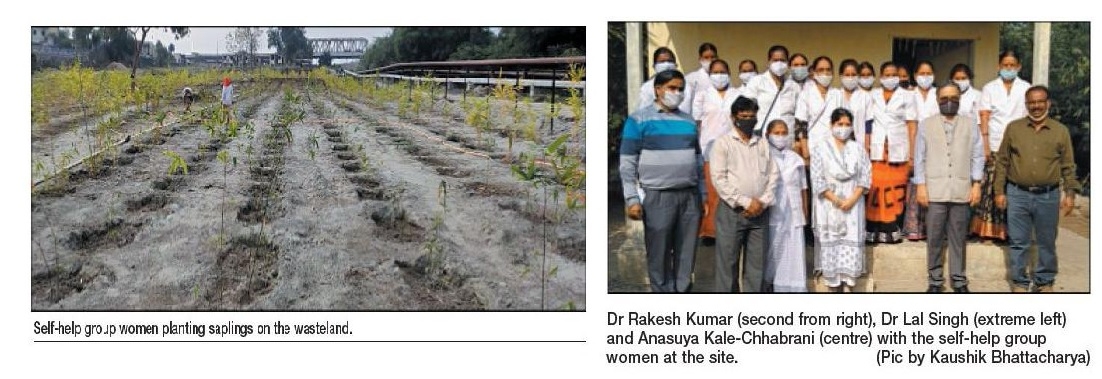Erstwhile wasteland now a green patch, courtesy NEERI
| Date :20-Jan-2021 |

By Kaushik Bhattacharya :
Koradi Thermal Plant’s fly ash dumping ground now converted into dense bamboo vegetation
‘Where there is a will there is a way’. This proverb has been proved right by Dr Lal Singh who rejuvenated a wasteland filled with fly ash into a dense bamboo vegetation in just one-and-a-half year. Dr Lal Singh, Senior Scientist, Environmental Biotechnology and Genomics Division in CSIR- National Environmental Engineering Research Institute (CSIR-NEERI) and his team, developed a technology that will transform wasteland into productive land.
They used the technology in more than 26 sites situated at Koradi and Khaparkheda Thermal Power Plants where previously MAHAGENCO dumped their fly ash which is the main reason behind air pollution in the locality. The eco-rejuvenation technology (ERT) has transformed all the sites into productive land and with the help of local self-help groups they have planted various bamboo saplings which is now about 7-feet tall in just one-and-a-half year duration. “Any wasteland which have little amount of nutrients for growth of plants can be converted into a productive land with the help of this eco-rejuvenation technology,” Dr Rakesh Kumar, Director, NEERI told The Hitavada during a visit to the site of Koradi Thermal Plant on Tuesday. “This technology is first of its kind in the world and we are currently promoting this technology at different places like Bhandara, Hinganghat, Gadchiroli, Chhindwara and Nagpur to re-use the wasteland for wealth generation,” said Dr Rakesh Kumar.

The idea behind the technology developed in the lab to actual regions for specific method of rejuvenation. The science is based on use of specific in-house developed media for root growth and selection of right species suited for the site. The last 2-3 years of work with MAHAGENCO has made 200 acres of wasteland with fly ash dump into a lush green eco system with improving soil characteristics, better air quality, improved moisture retention and home to some birds species. This transformation is not only bringing back land into useful processes but also providing jobs to nearby women who have been trained to work for these projects. “Out of 329 million hectares of land in India, 63.85 million hectares are wastelands or degraded land. This technology will help to improve the wastelands and also help to create job for villagers,” said Dr Lal Singh.
“We have planted about 55 different species of bamboo plants in this 200 acres of land that provided us by MAHAGENCO. These plants are providing jobs to 400 women who have attached with self-help-groups (SHG),” said Dr Lal Singh. MAHAGENCO did a contract for three years with SHGs to grow and maintain the land and plants. The women are also getting training for maintaining plants, make products from bamboo by NEERI. “MAHAGENCO is paying Rs 6,000 per month each to every women who are working on this land. After three years when the bamboo plants gets mature the SHGs can make bamboo products and can sale it by their own without any interference,” told Dr Lal Singh. “The use of this technology must be propagated in all over the country. It will help to improve the soil quality which will directly benefit the farmers,” said Dr Rakesh Kumar. Prathmesh Anerao, Project Assistant Level II and Roshan Kaware, Project Assistant Level I are the members of the team who are working hard with Dr Lal Singh on this project from the beginning.